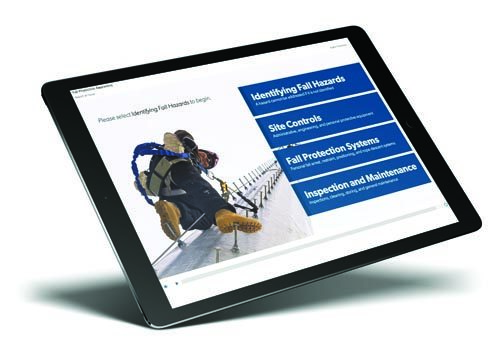Enhancing employee training
How can we enhance employee EHS training and increase learning?

Responding is Brent Daviau, CPTM, content team lead, KPA LLC, Lafayette, CO.
Whether your employees spend their days working behind computers or operating forklifts, the way environmental, health and safety information is communicated to them can play a big role in their ability to understand, retain and apply the procedures that keep them safe. Here are four strategies to consider when designing and implementing your safety program to make sure it gives employees of every learning style, experience level and skill set the information they need to maintain a safe working environment:
1. Know your employees.
First and foremost, for employees to master crucial knowledge, make sure the information is delivered in a way that’s relevant to them. Ask yourself some questions about who you’re trying to reach:
- What’s the average reading level of your employees?
- What’s their primary language?
- Where do you need them to learn this information?
The answers to these questions can guide your curriculum design by taking into account how your employees learn best. For example, a self-guided computer-based training with 20 slides to read and follow will pose a challenge to anyone who isn’t a strong reader or isn’t comfortable working on a computer. Instead, explore face-to-face training meetings or create audio recordings in your workers’ native languages to increase engagement and retention.
2. Consider ‘blended learning’ approaches to reach more people, more often.
Even when you can’t make basic generalizations about your employees’ overall learning styles, you’ll increase the odds that you can reach everyone more effectively if you make crucial information available in different ways. Use a presentation or computer-based training that provides general knowledge about lockout/tagout safety procedures, for example, and then follow up with an onsite instructor who physically demonstrates these procedures. The combination gives employees both foundational concepts and hands-on practice, while also reinforcing the most important information through repetition over time.
3. Use ‘learning by choice’ approaches to reach employees at every knowledge level.
In addition to learning differently, teams often have a wide variety of experience levels. Create training that builds on an employee’s prior knowledge, or lack of it, so that the program can give each employee what he or she really needs. Outside of required training, a 20-year company veteran may not need foundational EHS knowledge over and over again. Training scenarios that allow users to make educated guesses about the correct answer and then customize the information that follows based on that choice create a dynamic learning environment.
4. Apply ‘gamification’ tactics, but only if they speak to skills.
When learning is more of a game than a chore, retention of key concepts significantly improves. However, any learning “game” should capture the attention and skills of your team, tying back to the original idea of knowing your employees.
A leaderboard that ranks people who have completed a key training task can incentivize a sales group to achieve learning goals, for example. In contrast, a research or compliance team with a daily workload focused on methodical tasks might be more engaged by a challenge that requires thorough attention to detail, such as a scavenger hunt to identify workplace errors in a document or image.
Every organization has a unique workforce, and no approach will address every variable. However, ensuring training protocols speak to a variety of learning styles, experience levels and employee strengths increases the chances that your employees will retain the key concepts necessary to keep your workplace safe and healthy for all.
Editor's note: This article represents the independent views of the author and should not be construed as a National Safety Council endorsement.
Post a comment to this article
Safety+Health welcomes comments that promote respectful dialogue. Please stay on topic. Comments that contain personal attacks, profanity or abusive language – or those aggressively promoting products or services – will be removed. We reserve the right to determine which comments violate our comment policy. (Anonymous comments are welcome; merely skip the “name” field in the comment box. An email address is required but will not be included with your comment.)

